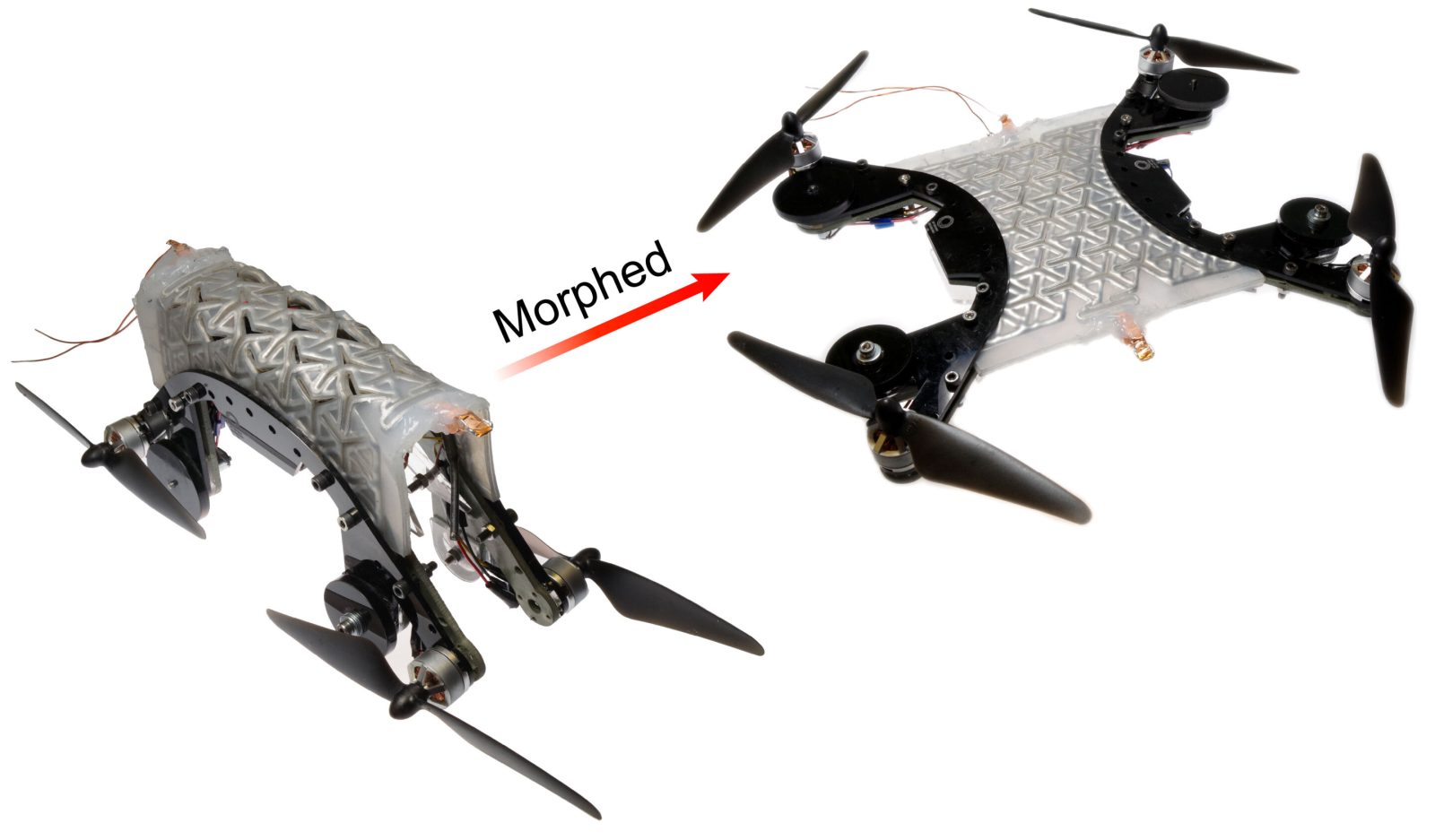
A team of researchers at Virginia Tech has developed pliable materials that can morph from ground traveling drones into aerial craft – and back – in a matter of seconds.
Led by Assistant Professor Michael Bartlett, the Virginia Tech squad took inspiration for their self-morphing, dual-functionality drones from living organisms capable of changing shape to enable different kinds of activity. Octopi do that as they move, eat, and interact with changing surroundings. Even human muscles alter form when flexed to lift loads and generate movement. Seeing that, Bartlett and his partners decided to devise materials that could permit a machine to similarly change form and attendant capabilities.
“When we started the project, we wanted a material that could do three things: change shape, hold that shape, and then return to the original configuration, and to do this over many cycles,” said Bartlett. “One of the challenges was to create a material that was soft enough to dramatically change shape, yet rigid enough to create adaptable machines that can perform different functions.”
To accomplish that, the team used the Japanese paper cutting art of kirigami to decern which kinds of shapes were inherently stronger, and applied those to rubber and composite materials. Into those skins were embedded an endoskeleton made of a low melting point alloy (LMPA). That allowed the outer-coated rubber ensemble to hold its shape when desired, then alter its form when the LMPA mesh was heated by soft wires near it.
What the Virginia Tech unit came up with was a stable structure of a car-like drone that could be morphed into a shape to facilitate flight using attached rotors. The trick was developing the exoskeleton LMPA to permit bending from one form to another, then be melted back to assume its original position when re-heated and cooled again.
“Normally, when a metal is stretched too far, the metal becomes permanently bent, cracked, or stretched into a fixed, unusable shape,” a press release read. “With this special metal embedded in rubber, the researchers turned this typical failure mechanism into a strength. When stretched, this composite would now hold a desired shape rapidly, perfect for soft morphing materials that can become instantly load bearing.”
The Virginia Tech experiment produced a drone capable of morphing from ground to aerial travel in just seconds, then return to original shape once back on ground. According to team member Edward J. Barron III, the innovation will soon be applied to other kinds of vehicles.
“We’re excited about the opportunities this material presents for multifunctional robots,” he said. “These composites are strong enough to withstand the forces from motors or propulsion systems, yet can readily shape morph, which allows machines to adapt to their environment.”
FTC: We use income earning auto affiliate links. More.


Comments